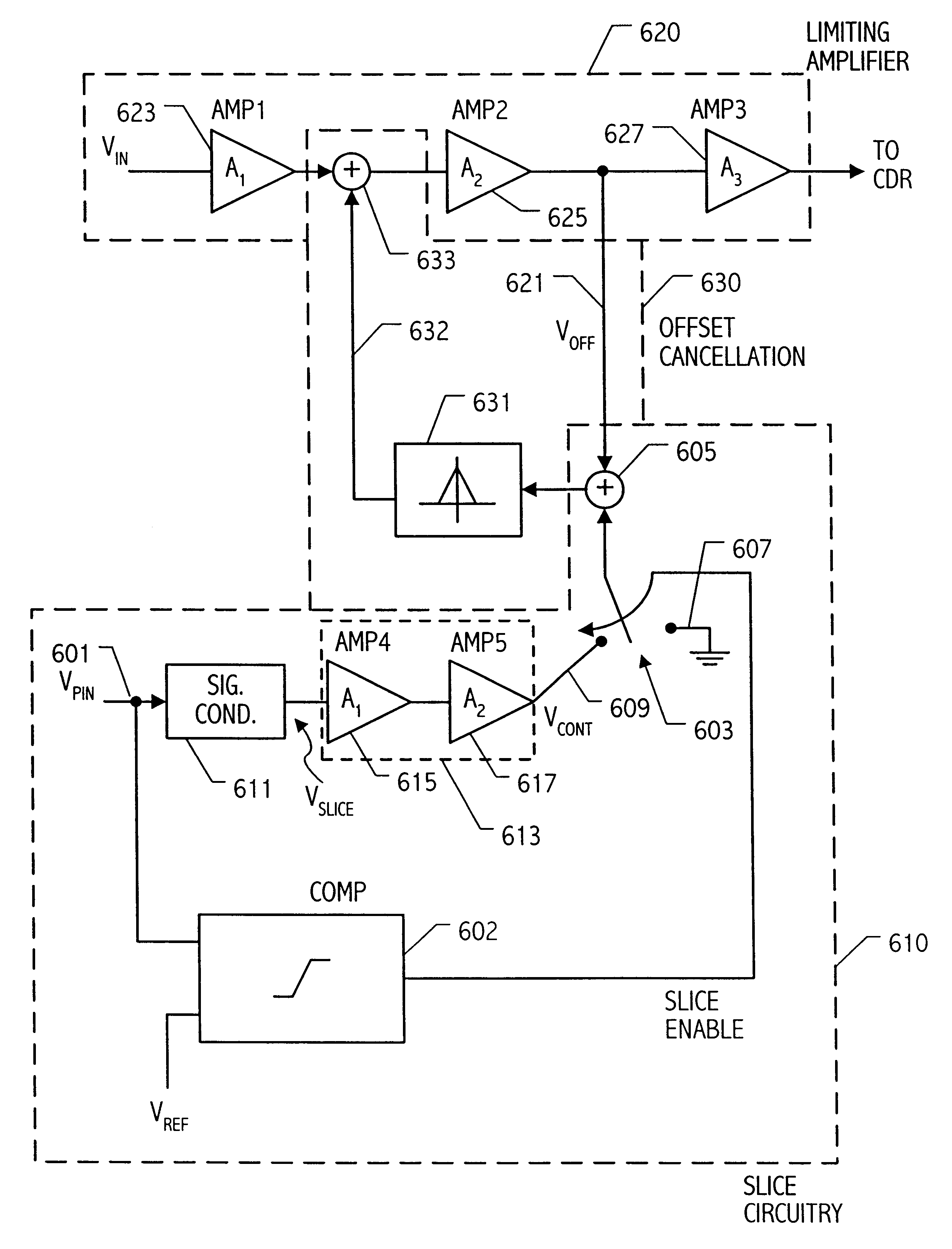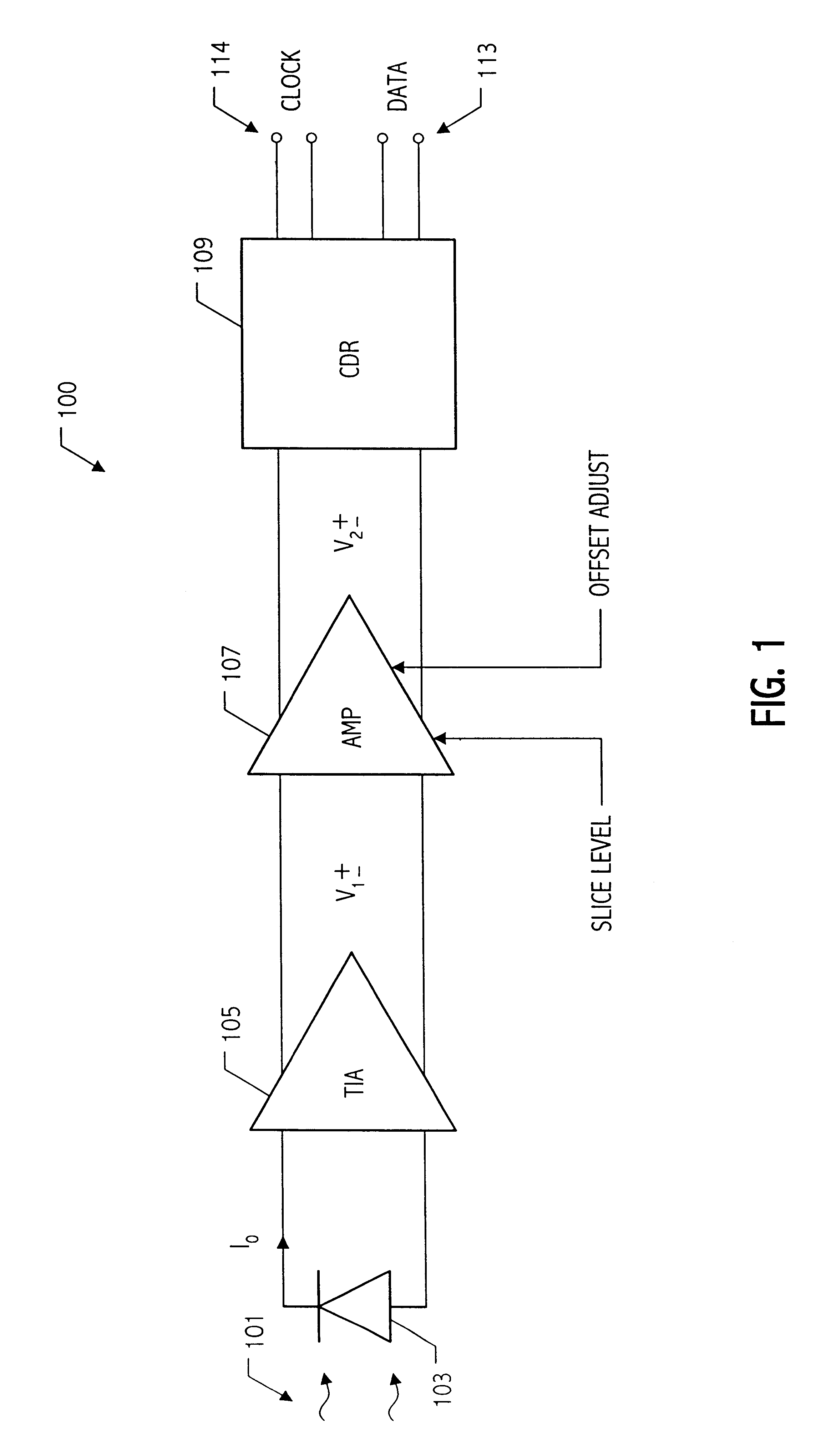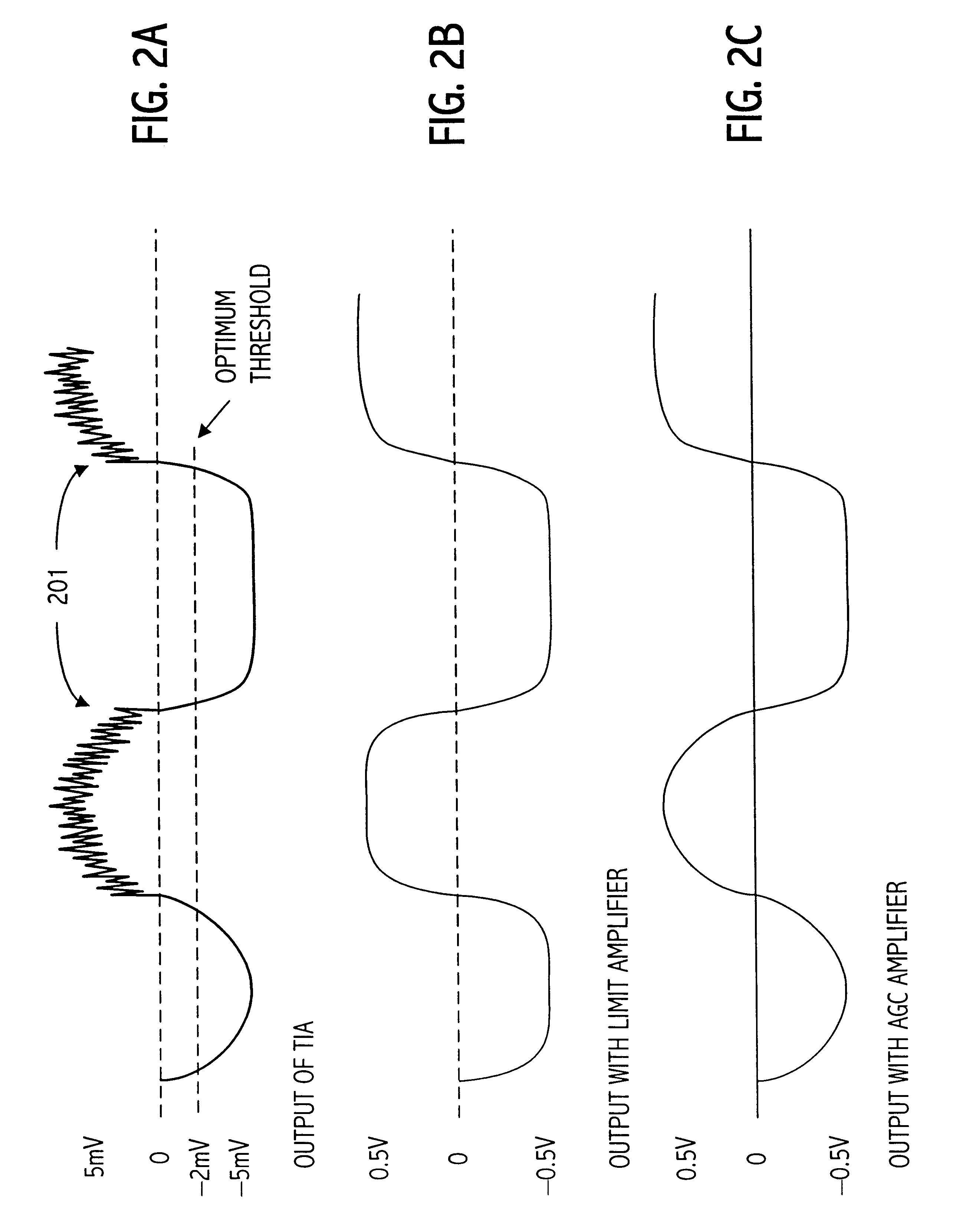Offset correction and slicing level adjustment for amplifier circuits
- Summary
- Abstract
- Description
- Claims
- Application Information
AI Technical Summary
Problems solved by technology
Method used
Image
Examples
Embodiment Construction
)
Referring to FIG. 6, a block-level diagram illustrates a slice and offset correction circuit that achieves slice adjustment and offset correction without the offset correction canceling the slice adjustment. The illustrated embodiment includes a slice circuit 610, an amplifier 620, and an offset correction circuit 630. In a preferred embodiment the amplifier is a multi-stage limit amplifier implemented in CMOS. Because CMOS circuits can recover quickly from an overdrive condition, a limit amplifier is well suited for CMOS. The amplifier 620 includes amplifier stage 623 (AMP1), amplifier stage 625 (AMP2) and amplifier stage 627 (AMP3). Amplifier stage 627 represents one or more stages. In one embodiment, there are six amplifier stages.
The slice level is provided at input pin 601, which in the illustrated embodiment, is the only pin required to implement slicing and offset control. In other embodiments, the slice level may be provided by other communications paths to the slice circui...
PUM
 Login to View More
Login to View More Abstract
Description
Claims
Application Information
 Login to View More
Login to View More - R&D
- Intellectual Property
- Life Sciences
- Materials
- Tech Scout
- Unparalleled Data Quality
- Higher Quality Content
- 60% Fewer Hallucinations
Browse by: Latest US Patents, China's latest patents, Technical Efficacy Thesaurus, Application Domain, Technology Topic, Popular Technical Reports.
© 2025 PatSnap. All rights reserved.Legal|Privacy policy|Modern Slavery Act Transparency Statement|Sitemap|About US| Contact US: help@patsnap.com



